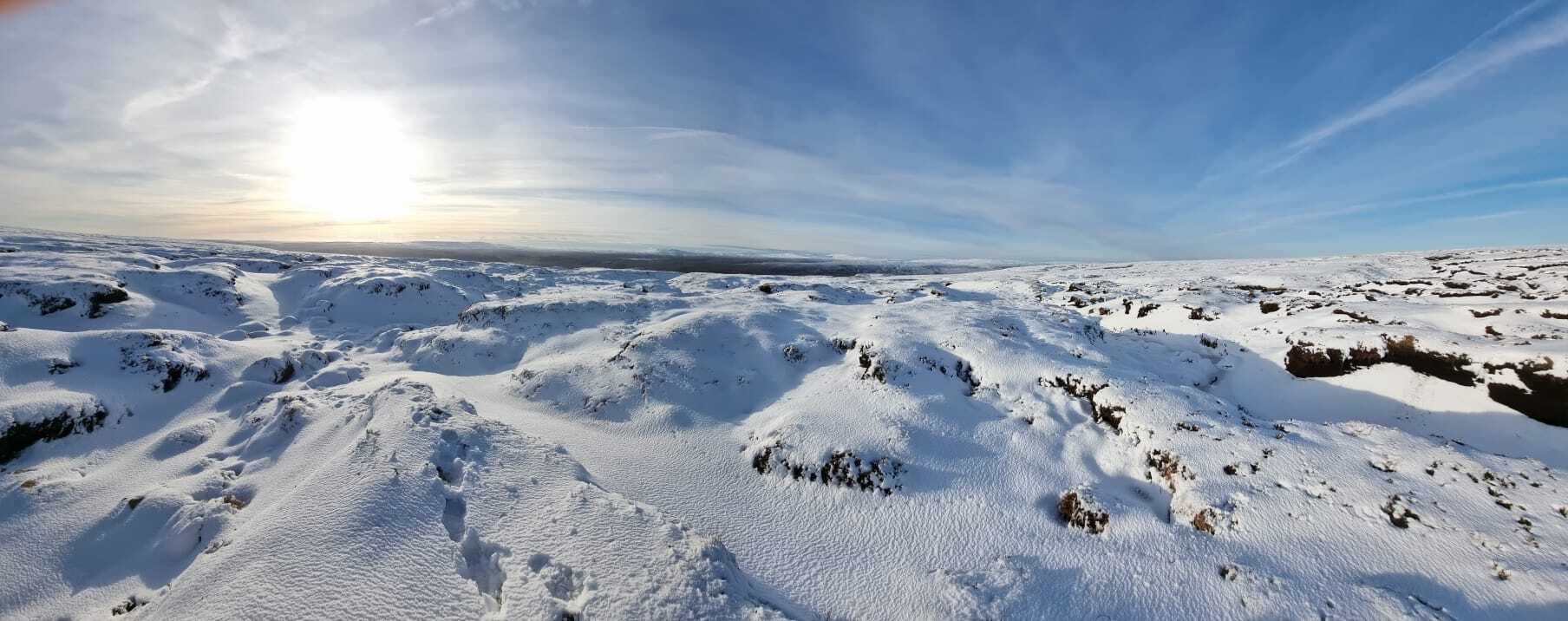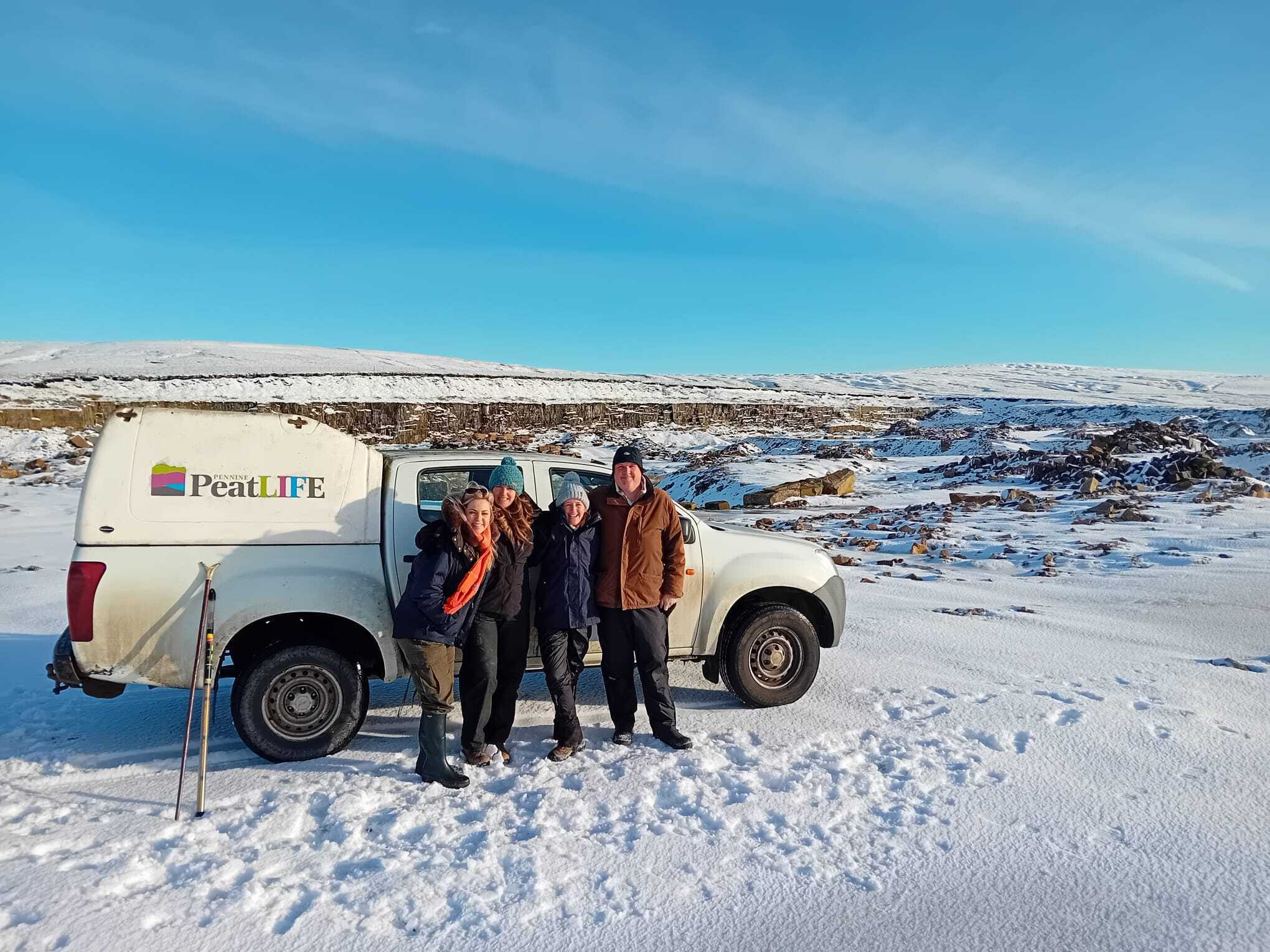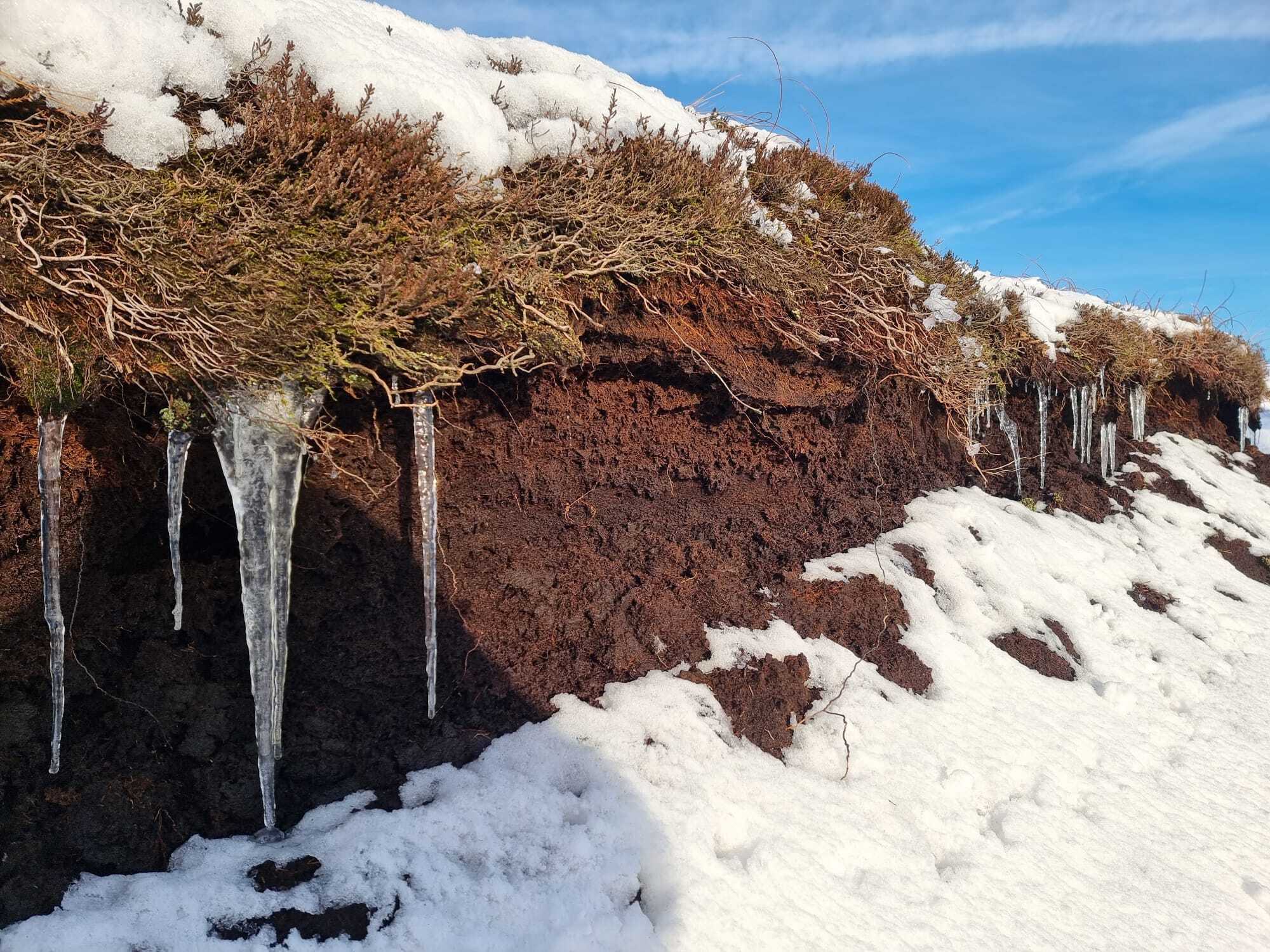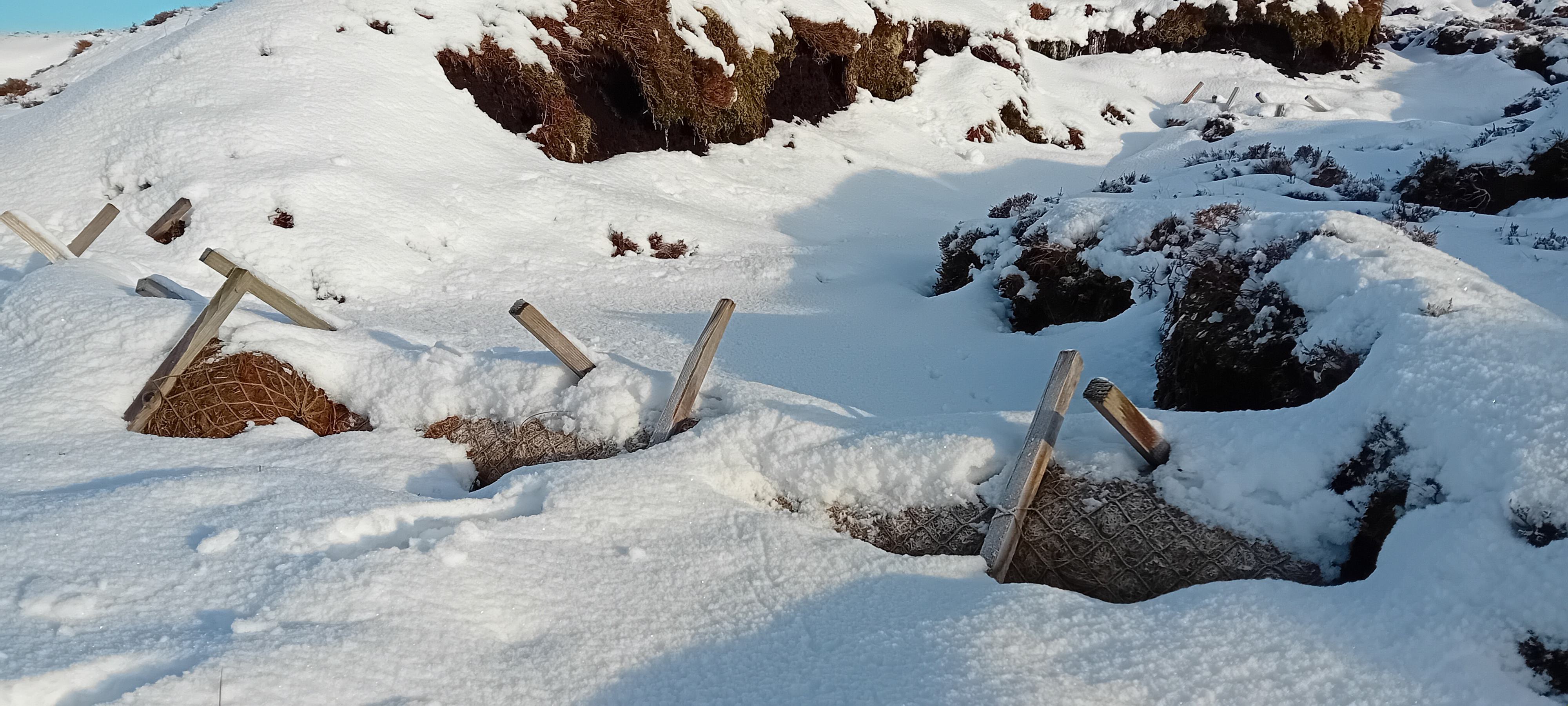Overview
In December, the National Landscapes Association’s Nature-based Solutions (NbS) team embarked on their first site visit together, heading to the glorious North Pennines National Landscape.
The team battled the snowy roads, fog and train strikes to be welcomed by the beautiful city of Durham, and on into the North Pennines.
This trip would help them learn about one of the most ambitious green finance projects the National Landscape is involved with: The Great North Bog.

The North Pennines National Landscape | National Landscapes Association
An overview of the North Pennines
Running from Derbyshire to Northumberland, the Pennines are a natural upland landmass, said to form the ‘backbone’ of England. It's there that you'll find the North Pennines National Landscape.
You might've heard of the Pennine Way National Trail which runs across this upland area.
As part of our visit, the North Pennines team kindly spent time with us describing the scale of their landscape area and shared snippets of their large-scale projects, including woodland, riparian (river bank) and peatland restoration; working with a huge range of land managers.
All the amazing work by all National Landscapes Partnerships is undertaken without owning any land themselves, therefore good relationships and collaboration are key.
The North Pennines National Landscape is one of a number of partners involved in the Great North Bog project; “an ambitious, large-scale peatland restoration initiative”.
Alistair Lockett (Field Officer) and Paul Leadbitter (Peatland Programme Manager) took us up high above the snowline to explore a small selection of their upland peatland regeneration efforts in-situ.
We were lucky as the sun was shining, and with enough layers we were warm despite the minus 10ᴼC wind-chill factor!

The Nature based Solutions team with Paul Leadbitter
What is peat, anyway?
Peat looks like soil, but it's actually partially-degraded vegetation or organic matter.
The conditions have to be right for peat. It forms when full decomposition can't take place because of low oxygen and nutrient levels, and high acidity.
So, why do we care about peat so much?
Peat in good condition can store carbon. Peat in bad condition emits carbon.
It's estimated that degraded peatland accounts for around 1.9 gigatonnes of carbon dioxide emissions globally every year.
That's about 5% of our collective greenhouse gas emissions.
And when you consider that damaged peatland is only 0.3% of our landmass, we've got a pretty serious problem.
Following the second world war, land owners were incentivised to (among other things) drain their damp peat bogs so that more land could be used for farming.
Economically, this national land use transformation was a triumph. Ecologically, it was a disaster.
Restoring peatland often involves undoing a lot of the work that took place just a few decades ago.
Luckily, our passionate teams and their partners are tackling it head-on.

Chilly peat | National Landscapes Association
What the National Landscape team are up to
Upland and lowland peatlands in the UK have long been used by humans.
From removing and using peat as a source of fire fuel or horticultural compost, to draining huge swathes to help grass to grow (enable better livestock grazing), or growing non-native conifer (pine) trees, or burning/cutting to boost grouse numbers for hunting and shooting activities.
Aside from biodiversity loss, damaged, bare peat releases carbon into the atmosphere, and as it takes 10 years for 1cm depth of peat to form, it takes millennia to build it back up!
The North Pennines peatland team have been working hard to restore the vast areas of dry, damaged and bare peat.
We got up close to peatland restoration techniques using nature-based solutions, such as coir rolls and leaky stone dams carefully added to block the grips (drainage ditches) and used to both capture eroding peat sediments on-site and slow the flow of water.
Once the sediments build up enough, they re-vegetate naturally or can be assisted with appropriate local, native seed mixes, and micro-propagated sphagnum moss - all helping to restore nature.
The more biodiverse the area, the more resilient it will be to climate change.
Similarly, eroded peatland haggs (a steep piece of peat, like a mini-cliff) are "reprofiled" to reduce their steepness so that vegetation can grow again more successfully.
Many interventions of this kind add up across this vast landscape helping to re-wet the peat bog and reduce flooding in valleys below.
The North Pennines team also map out all their interventions and monitor them for success or deterioration, along with the depth of the peat across the landscape, so that changes can be assessed.

Coir roll made from coconut husk | National Landscapes Association
So, what's next?
Being there in person enabled us to get into much greater detail on the vision of the North Pennines and its involvement in the Great North Bog.
We will piece this together with what we learn from visiting other National Landscape teams to help build the robust financial strategy and ethics charters needed for these precious landscapes.
Whilst we were not lucky enough to see hen harriers this time, we spotted short-eared owls quartering the moors as we headed back to the lowlands.
With thanks to the North Pennines National Landscape team for hosting us, we look forward to returning soon!

National Landscapes Association with Paul and Alistair from the North Pennines National Landscape team
How you can help the UK's peatlands
- Keep your peat knowledge up-to-date. The IUCN is a great place to start: About Peatlands.
- Use peat-free compost and support suppliers/garden centres who do the same.
- Visit one of your local peatland landscapes to find out more and get involved.
- Support estates and land managers who sustainably manage this fragile landscape and its wildlife.
- Kirsty Brown, NbS Project Officer.
